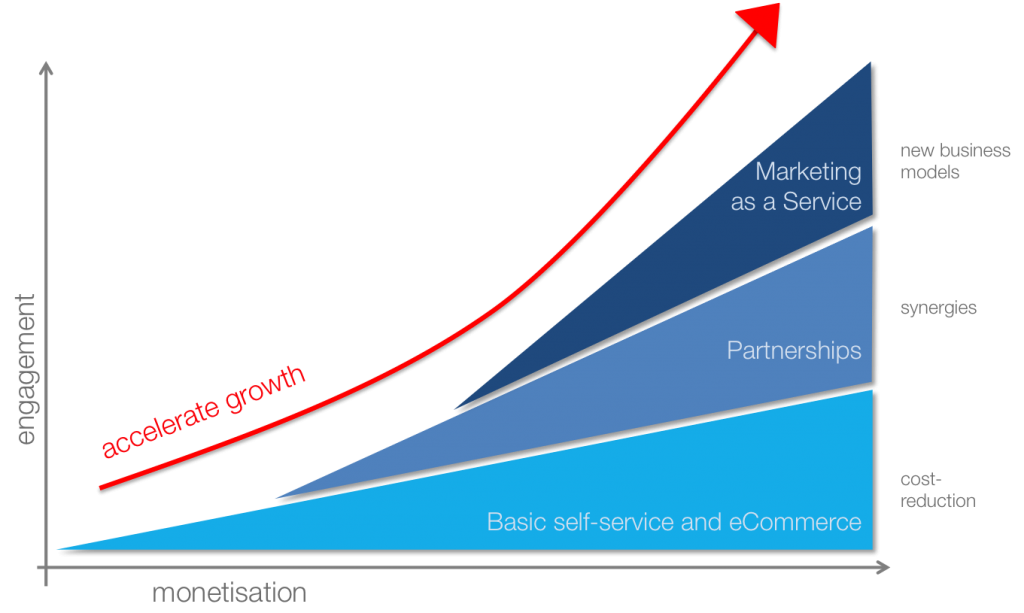To start a robust digital transformation there needs to be a clear motivation and mandate. Both importance (why) and urgency (why now) are important starting points for any transformation. For most industries the transformation is set in to meet the challenges of disrupting trends in their domain. eCommerce, contextual marketing and introducing new verticals to become a ‘platform business’ are often the triggers to restructure or streamline the current operation.

Why:
defining the purpose
The ‘Why question’ is key. Having a clear northern star to navigate on will offer guidance in terms of direction when more tactical decisions need to be made in order to overcome obstacles or meet immediate goals.
Having defined the ‘Why’, and inherently the purpose of both the organisation and the transformation, will allow to maintain and even strengthen the mandate as the transformation progresses towards predefined goals.
Examples of the Why-question are:
- Why do you need to transform? (defining importance and why the current praxis is not aimed to achieve the organisational goals)
- Why now? (defining urgency)
- Why you? (are you following or leading in your segment?)

How:
Defining the methodology
Once you have a clear view on our objectives and purpose, you shall choose a fitting methodology. In other words; How will you approach the transformation?
The methodology bridges between the purpose and the outcome. For digital transformations there is a high degree of uncertainty, so it is advised to use agile methods that allow for short cyclical evaluations and to pivot on its learnings.
Not all processes need to be fully agile. Namely in bigger organisations there are well established processes that offer a predictable outcome, based on experience and routine. It is key though, for these processes, to allow the agility to emerge where it is required. For example some security processes need their ‘waterfall’ checks and balances for good reasons, but should aim to offer a toolbox for the more agile areas to keep their momentum while maintaining a strong sense of security if any front-end is breached.
Examples of the How-question are:
- How will you deal with uncertain customer demand?
- How will you develop new interfaces that meet our target group’s favour?
- How do you avoid that experiments breach our security or dilligence?
- How do you motivate investment if you don’t have a clear view on the commercial potential yet?
What:
Defining the roadmap
Once you have set a clear direction, definition-of-success and the methodological principles of how you will approach the transformation, you can define the actions, their milestones and their ‘definition-of-done’.
The first milestone to establish is a clear view on the ‘as is’. In other words, what is the current state of your product, your operation and how do customers perceive your services around the product?
The way this is assessed needs a clear understanding of the objectives, but in general the assessment can be broken down in 3 parts:
- governance & mandate
- Who are the main stakeholders?
- How do they benefit from the transformation?
- technology readiness
- the state of core IT (CRM and billing capabilities, data sources, level of standardisation)
- API readiness (availability, performance, level of standardisation)
- channels & supply chain*
- penetration
- consistency
- agility
* please find a detailed example of a (digital) channel assessment here.

